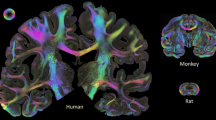Abstract
The changes in the contribution of ATP-sensitive potassium channels (KATP) to basal vascular tone maintenance and acetylcholine (ACh)-mediated dilation of pial arteries after global cerebral ischemia (2VO + hypo model) caused by a single cerebral ischemia–reperfusion were studied in Wistar rats. Ischemia was modeled by bilateral carotid artery clam** for 12 min paralleled by maintaining the mean arterial pressure at 45 ± 2 mm Hg. Sham-operated rats served as a control. Vascular examination was performed on days 7, 14 and 21 after ischemia. Changes in the contribution of KATP channels to the basal vascular tone were assessed using intravital microphotography by the number of vessels constricted in response to the effect of a KATP channel blocker glibenclamide (10 µM). Changes in the contribution of KATP channels to vascular dilation were assessed by comparing the number and degree of arterial dilation in response to ACh (10–7 M, 5 min) before and after glibenclamide application. It was found that ischemia reduces the role of KATP channels in basal vascular tone maintenance in pial arteries during 14 days after ischemic exposure. At the same time, the role of KATP channels in the implementation of ACh-mediated dilatory responses of pial arteries also decreases. By postischemic day 21, KATP channels are virtually no longer involved in the dilatory response to ACh.





Similar content being viewed by others
REFERENCES
Huang Y, Hu D, Huang C, Nichols CG (2019) Genetic discovery of ATP-sensitive K+ channels in cardiovascular diseases. Circ Arrhythm Electrophysiol 12(5):e007322. https://doi.org/10.1161/CIRCEP.119.007322
Lorigo M, Oliveira N, Cairrao E (2020) Clinical importance of the human umbilical artery potassium channels. Cells 9(9):1956. https://doi.org/10.3390/cells9091956
Tykocki NR, Boerman EM, Jackson WF (2017) Smooth muscle ion channels and regulation of vascular tone in resistance arteries and arterioles. Compr Physiol 7(2):485-581. https://doi.org/10.1002/cphy.c160011
Shekhar S, Liu R, Travis OK, Roman RJ, Fan F (2017) Cerebral autoregulation in hypertension and ischemic stroke: a mini review. J Pharm Sci Exp Pharmacol 2017(1):21-27.
Syed AU, Koide M, Brayden JE, Wellman GC (2019) Tonic regulation of middle meningeal artery diameter by ATP-sensitive potassium channels. J Cereb Blood Flow Metab 39(4):670-679. https://doi.org/10.1177/0271678X17749392
Szeto V, Chen NH, Sun HS, Feng ZP (2018) The role of KATP channels in cerebral ischemic stroke and diabetes. Acta Pharmacol Sin 39(5):683-694. https://doi.org/10.1038/aps.2018.10
Armstead WM, Riley J, Cines D B, Higazi AA-R (2011) tPA contributes to impairment of ATP and Ca sensitive K channel mediated cerebrovasodilation after hypoxia/ischemia through upregulation of ERK MAPK. Brain Res 28: 1376: 88–93. https://doi.org/10.1016/j.brainres.2010.12.052
Lakhan SE, Kirchgessner A, Hofer M (2009) Inflammatory mechanisms in ischemic stroke: therapeutic approaches. J Transl Med 7:97. https://doi.org/10.1186/1479-5876-7-97
Smith ML, Bendek G, Dahlgren N, Rosen I, Wieloch T, Siesjo BK (1984) Models for studying long-term recovery following forebrain ischemia in the rat: 2. A 2-vessel occlusion model. Acta Neurol Scan 69: 385–401.
Shuvaeva VN, Gorshkova OP (2018) Modulation of the tone of the cerebral arteries with acetylcholine in rats of different lines. Russ J Physiol 104 (7): 807-816. https://doi.org/10.7868/S0869813918070067
Soltani N, Mohammadi E, Allahtavakoli M, Shamsizadeh A, Roohbakhsh A, Haghparast A (2016) Effects of dimethyl sulfoxid on neuronal response characteristics in deep layers of rat barrel cortex. Basic Clin Neurosci 7(3): 213-220. https://doi.org/10.15412/J.BCN.03070306
Findlay I (1993) Sulphonylurea drugs no longer inhibit ATP-sensitive K+ channels during metabolic stress in cardiac muscle. J Pharmacol Exp Ther 266: 456–467.
Foster MN, Coetzee WA (2016) K+ATP Channels in the cardiovascular system. Physiol Rev 96(1):177-252. https://doi.org/10.1152/physrev. 00003. 2015
Gendron ME, Thorin E, Perrault LP (2004) Loss of endothelial KATP channel-dependent, NO-mediated dilation of endocardial resistance coronary arteries in pigs with left ventricular hypertrophy. Br J Pharmacol 143(2):285-291. https://doi.org/10.1038/sj.bjp.0705937
Zhang DM, Chai Y, Erickson JR, Brown JH, Bers DM, Lin YF (2014) Intracellular signalling mechanism responsible for modulation of sarcolemmal ATP-sensitive potassium channels by nitric oxide in ventricular cardiomyocytes. J Physiol 592(5): 971-90. https://doi.org/10.1113/jphysiol.2013.264697
Gorshkova OP, Shuvaeva VN, Lentsman MV, Artemyeva AI (2016) Postischemic changes in the vasomotor function of the endothelium. Modern problems of science and education 5:1. http://science-education.ru/ru/article/view?id=25270
Yang JL, Mukda S, Chen SD (2018) Diverse roles of mitochondria in ischemic stroke. Redox Biol 16:263-275. https://doi.org/10.1016/j.redox.2018.03.002
Dunn KM, Nelson MT (2014) Neurovascular signaling in the brain and the pathological consequences of hypertension. Am J Physiol 306(1):H1-H14. https://doi.org/10.1152/ajpheart.00364.2013
Venkatesh N, Lamp ST, Weiss JN (1991) Sulfonylureas, ATP-sensitive K+ channels, and cellular K+ loss during hypoxia, ischemia, and metabolic inhibition in mammalian ventricle. Circul Res 69: 623–637. https://doi.org/10.1161/01.res.69.3.623
Chutkow WA, Pu J, Wheeler MT, Wada T, Makielski JC, Burant CF, McNally EM (2002) Episodic coronary artery vasospasm and hypertension develop in the absence of Sur2 K(ATP) channels. J Clin Invest 110(2): 203–208. https://doi.org/10.1172/JCI15672
Palygin O, Miller BS, Nishijima Y, Zhang DX, Staruschenko A, Sorokin A (2019) Endothelin receptor A and p66Shc regulate spontaneous Ca2+ oscillations in smooth muscle cells controlling renal arterial spontaneous motion. FASEB J 33(2): 2636–2645. https://doi.org/10.1096/fj.201800776RR
Funding
This work was state budget-funded. It was also supported by the Program of Basic Research for long-term Development and Ensuring the Competitiveness of the Society and State.
Author information
Authors and Affiliations
Contributions
Conceptualization and experimental design: O.P.G.; data collection: I.B.S.; data processing: O.P.G. and I.B.S.; writing and editing a manuscript: O.P.G. and I.B.S.
Corresponding author
Ethics declarations
CONFLICT OF INTEREST
The authors declare that they have no conflict of interest related to the publication of this article.
Additional information
Translated by A. Polyanovsky
Russian Text © The Author(s), 2021, published in Rossiiskii Fiziologicheskii Zhurnal imeni I.M. Sechenova, 2021, Vol. 107, No. 9, pp. 1150–1161https://doi.org/10.31857/S0869813921090053.
Rights and permissions
About this article
Cite this article
Gorshkova, O.P., Sokolova, I.B. Ischemia Changes the Contribution of KATP-Channels to Basal Tone and Dilation of Rat Pial Arteries. J Evol Biochem Phys 57, 1120–1129 (2021). https://doi.org/10.1134/S0022093021050136
Received:
Revised:
Accepted:
Published:
Issue Date:
DOI: https://doi.org/10.1134/S0022093021050136




